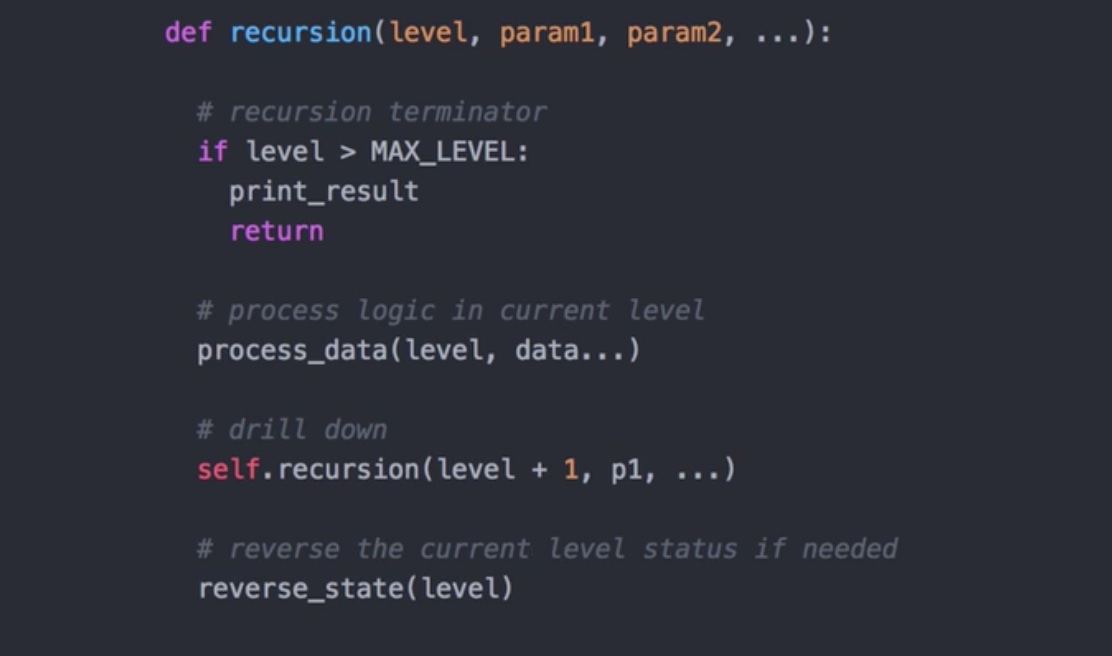问题描述(难度中等)
Implement pow(x, n), which calculates x raised to the power n (xn).
Example 1:
1 | Input: 2.00000, 10 |
Example 2:
1 | Input: 2.10000, 3 |
Example 3:
1 | Input: 2.00000, -2 |
Note:
- -100.0 < x < 100.0
- n is a 32-bit signed integer, within the range [−231, 231 − 1]
递归经典范式
递归的写法主要包括四个部分,第一个recursion terminater终止条件,第二个process logic in current level当前level需要执行的逻辑,第三个drill down进入到下一层,第四个reverse the current level status if needed内层结束后继续执行。

方法一:递归方式一
通过递归的方式将n次方的问题拆分成n/2的子问题,时间复杂度减少到logn。x的n次转换为x^2的n/2次子问题。
方法一代码
1 | public double myPow(double x, int n) { |
方法二:递归方式二
利用递归范式的第四步,子问题返回的结果乘以自身。
方法二代码
1 | public double myPow1(double x, int n) { |
方法三:非递归方式
不采用递归的方式。
方法三代码
1 | double myPow(double x, int n) { |
总结
这道题主要是理解递归的范式,递归虽然简洁还是需要灵活运用。